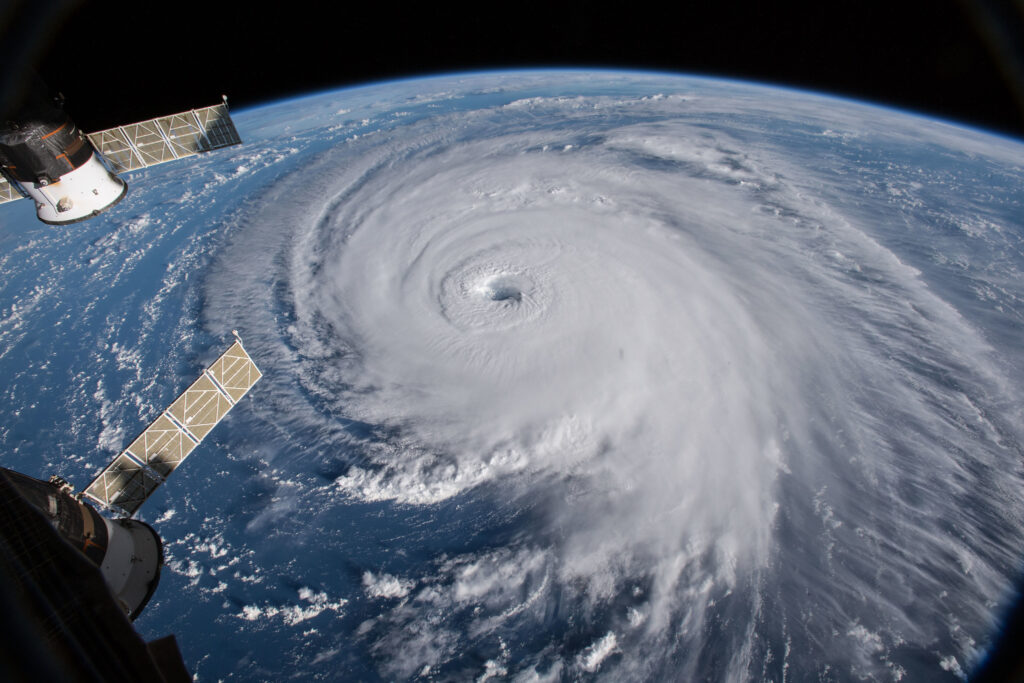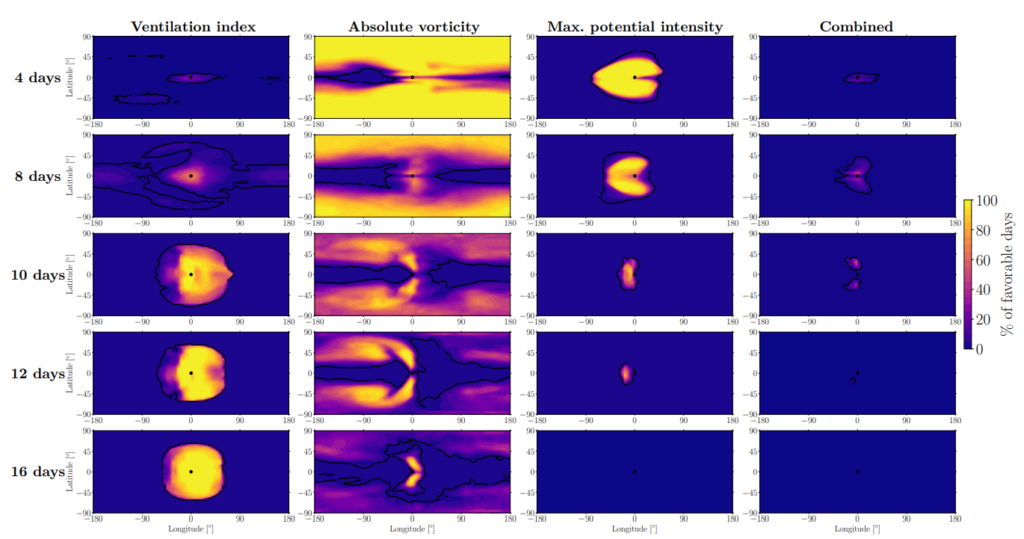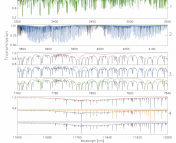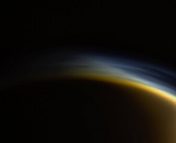Title: Hurricane genesis is favorable on terrestrial exoplanets orbiting late-type M dwarf stars
Authors: Thaddeus D. Komacek, Daniel R. Chavas, and Dorian S. Abbot
First Author’s Institution: Department of the Geophysical Sciences, The University of Chicago, Chicago, IL
Status: Accepted to ApJ, preprint on arxiv
Despite their destructive nature, hurricanes (more generally referred to as cyclones), are thought to play an integral role in regulating the Earth’s global climate. Hurricanes are one of the main mechanisms that act to move heat energy away from the equator and up toward cooler latitudes. The effectiveness of this heat transport depends sensitively on the location in which hurricanes form and the resulting paths that they follow. The detailed behavior of these storms may be a key factor in what makes the Earth suitable for life.

Astronomers are in the very early phases of beginning to understand the atmospheres and climates of planets around other stars. In the coming years, space-based observatories like the James Webb Space Telescope (JWST) will provide a tantalizing look at the light that shines through and reflects off the atmospheres of exoplanetary worlds similar to the Earth. The molecules that reside in and chemistry happening in these atmospheres will leave a spectral fingerprint on the light that makes its way out across interstellar space.
Of course, a question that is on everyone’s minds will be how to tell if one of these worlds might support life. As with Earth, hurricanes might be a key component that drives global heat transport throughout the atmosphere. If so, knowing where and how exoplanetary hurricanes can form is imperative for understanding the dynamic climates of these alien worlds.
Our best shot at answering these questions in the next decade will come from studying planets around tiny M stars. Not only are these systems incredibly common, but the relatively large size of the planet compared to the star makes the planet much easier to detect. These types of worlds are somewhat different than the Earth, however, in that they reside incredibly close to the star, often taking only 10 or 20 days to complete a full orbit! This close to the star, tidal interactions start to become significant, and many of these planets are expected to be tidally locked to the star.
In terms of the climate of the planet, this tidal locking has two important implications: first, a tidally locked planet will have a very strong temperature contrast between the day and night side. Second, the climate of the planet will be very strongly dependent on the temperature of the star and the distance to it. In contrast, the Earth’s climate also sensitively depends on its rotation period and axial tilt, which makes the other aforementioned factors play a slightly less significant role.The authors of today’s paper seek to understand what conditions are most favorable for hurricane genesis on ocean-covered planets orbiting M stars. In particular, the authors want to determine whether there is a ‘sweet spot’ in terms of planetary orbital period where hurricanes are most likely to form. To do so, the authors model an exoplanetary atmosphere using a general circulation model (GCM), vary the parameters of the planet-star configuration, and measure a number of well-established meteorological metrics to quantify the potential for the formation of an exo-hurricane.

Three of these hurricane genesis metrics are shown in figure 2 over the surface of an exoplanet. Here, each column represents a different metric, while each row shows the probability of hurricane formation across the planet as it is placed at different distances from the star.
Getting the conditions just right
The first metric, the ventilation index, measures the rate at which cool, dry air is drawn in from above the storm. As the rotation period of the planet quickens, ventilation becomes more effective, and forming hurricanes don’t get as much of a chance to build up. At the same time, a faster rotating planet increases the absolute vorticity, which sets the amount of ‘spin’ available to wind up a hurricane. Similarly, the maximum potential intensity, which is a measure of the wind speed in the atmosphere, also benefits from a faster planetary spin.
The right-most column in figure 2 shows the final hurricane genesis probability when combining these three metrics. Although you need a quickly rotating planet to really get the atmosphere swirling around, this also increases the effectiveness of ventilation, which tends to dissipate storms. It turns out that there is a ‘sweet spot’ for hurricane formation somewhere around 8-10 days for a tidally locked planet. Interestingly, a planet with an orbiting a cool M star with a period of 8-10 days would sit right in the middle of the habitable zone.
Spotting an exo-hurricane
From these results, hurricane formation on close-in planets around M stars certainly seems plausible, but one important question remains: would we ever be able to detect one? Unfortunately, direct imaging of one of these worlds will not be possible any time soon, but there are a few ‘tricks’ that could be used to infer the presence of a hurricane. A storm like this that sits near the terminator of a planet can transport water vapor in or out of view, which might manifest itself as a noticeable change in the spectrum of the planet.
When viewed from space, the amount of cloud cover on the Earth during hurricane season changes drastically. A crude measurement of cloud cover on an exoplanet is possible by tracking how much light the planet reflects over the course of an orbit. Variations in cloud cover over short timescales could also be linked to the genesis and dissipation of exo-hurricanes. Both of these observational signatures should be within reach with the coming launch of JWST!




